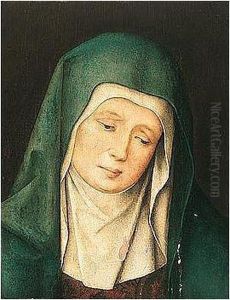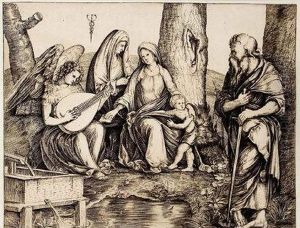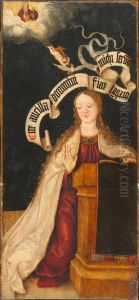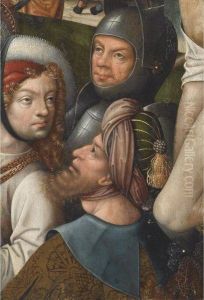Jan Baegert Paintings
Jan Baegert was a German painter associated with the Northern Renaissance, specifically within the region of Westphalia. He is believed to have been born around 1460-1470, though the exact date and place of his birth remain uncertain. His work is often characterized by its detailed depiction of religious themes and narratives, typical of the Northern Renaissance style, which was heavily influenced by the International Gothic tradition.
Baegert's father, Derick Baegert, was also a painter, which suggests that Jan likely received his initial training in the family workshop. This was a common practice for the time, as artistic skills and trade secrets were often passed down from generation to generation. Jan Baegert's work shares stylistic similarities with that of his father, indicating the strong influence of his early training environment.
The majority of Jan Baegert's known works are altarpieces, which were commissioned for churches in the Westphalia region. One of his most significant works is the altarpiece for the church of St. Lambert in Coesfeld, which is considered a masterpiece of late Gothic painting. His compositions are marked by their careful attention to detail and a certain stiffness in the figures, a characteristic of transition periods when the fluidity of the Renaissance had not yet fully replaced the formality of Gothic art.
Jan Baegert's paintings exhibit a strong use of color and a meticulous approach to rendering materials and textures. His work demonstrates an intimate understanding of human emotion, as seen in the expressive faces of his subjects. The backgrounds of his paintings often feature landscapes or architectural elements that show a developing sense of perspective, even though they sometimes retain a symbolic or hierarchical representation of space rather than a strictly naturalistic one.
There is limited information about Baegert's life outside of his artistic production. The records of his death are similarly vague, with an estimated death year of around 1535. Despite the lack of extensive personal details, Jan Baegert's contributions to the Northern Renaissance and the art of Westphalia are recognized through the altarpieces and other religious works that have survived. His legacy is also preserved in the continuation of the Baegert family workshop, which influenced the region's artistic output for several generations.



